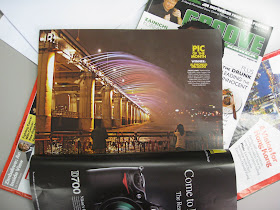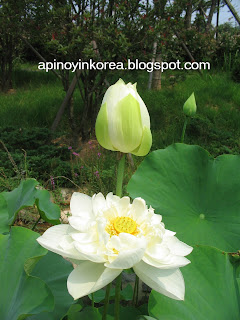




I have lived in Hannam-dong in Yongsan-gu in Seoul, for five years now, and have liked this neighborhood because it's quiet with no flashy neon signs along the main street. It's also very accessible to and from Gangnam, Myeongdong and basically, the rest of Seoul!
But the two best reasons of living in Hannam-dong are: Everyday, I get to enjoy the view of Namsan all year round - especially in the fall with all its colors! And the other reason is that it's close to Itaewon!
I have never considered Hannam-dong as an international food scene. Hannam-dong is simply known as Seoul's version of the Embassy Row, where embassies of different countries and their diplomats live. And most of them reside at the UN Village, which is, perhaps, Hannam-dong's most famous landmark (Dankook University used to be the landmark before it transferred its campus).
Before, restaurants with non-Korean menus were limited. But lately, there seems to be a changing of the food scene in my neighborhood. For the past months, new restaurants have opened business (and their menus) in Hannam-dong, which is a delight to those living in the neighborhood (expats, Koreans and me!), as well as for those living in the nearby areas.
Restaurants like the Banana Grill (sandwiches and hamburgers), Slow Kitchen (rich paired with chicken, etc.), O' Taco (burritos and tacos), Sujus (barbecues, rice, noodles, hummus, etc.), Naked Grill (salads, hamburgers, pasta), and soon, Beluca's table, are giving everybody (including my palate!) lots of choices when it comes to satisfying one's craving for something different.
These restaurants join the 'oldies' in the neighborhood such as Due Cose (Italian), Shaboo-Shaboo, Puffin Cafe (western), Western China (Chinese, of course!), Chakraa (Indian) and New York Steakhouse.
One can now walk around Hannam-dong street with lots of choices to think about. And as for cafes, there is Cafe Appassionato and Paris Croissant, and the sweet shops - Lynn's Cupcakes and Tyche's.
In case you want to visit my neighborhood, Hannam-dong is less than five minutes away from Itaewon. One can also take the Green Bus 0213 and Blue Bus 110 from Itaewon. These buses pass through the Hannam-dong main street. You can also take these buses from Hangangjin Station, Exit 2.
And if you're driving, you can just ask your navigator to lead you to 'UN Village'. Parking will be a slight problem though.
I'll see you soon!
Ciao!

























